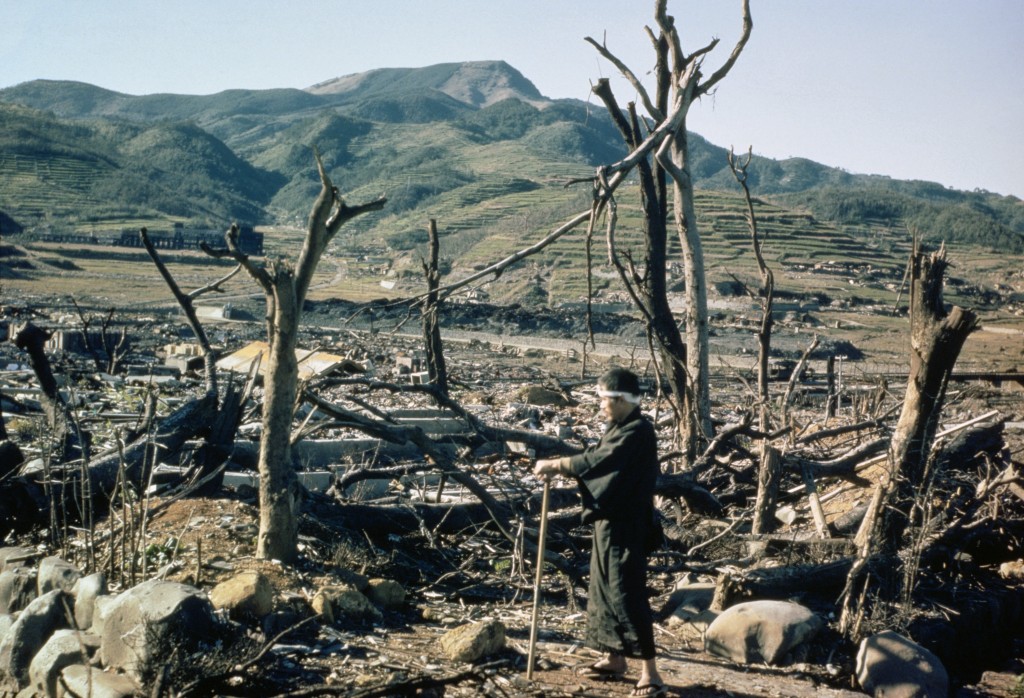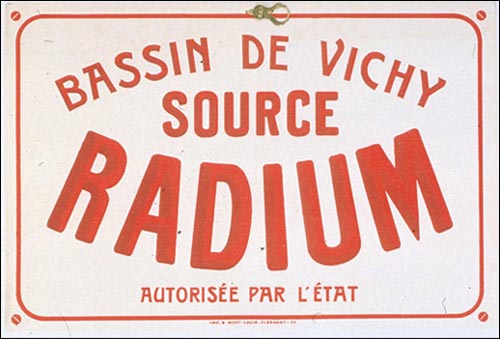All radioactive elements “decay” by emitting [either] an alpha particle (a helium nucleus), a beta particle (an electron) or a gamma ray (pure energy), eventually becoming stable elements. An element’s “half-life” is the time needed for ½ of the atoms in the “parent” element to decay into a “daughter” isotope. For the Potassium-40 in our bananas and bodies, it is 1.2 billion years. For the Americium-241 in our smoke detectors, it’s 432 years, and for Iodine-131, it’s 8 days.
Contrary to popular belief, elements with long half-lives, which decay slowly, present less risk than those with short half lives.
[The half life of Thorium is 14.05 billion years – about the age of our universe]
Radioactivity is measured by the number of decays per second. One decay per second is one Becquerel (Bq). One banana produces about 15 Becquerels from its potassium-40, and smoke detectors emit 30,000 Becquerels, so when nuclear power critics fuss about 64,000 Becquerels entering the ocean at Fukushima, remember that 64,000 Becquerels is equal to 14 seconds of potassium radiation activity that occurs inside our bodies every day. (The radioactivity of normal seawater is 14,000 Becquerels per cubic meter).
However, focusing on Becquerels without considering the energy absorbed by the body is pointless: You can throw a bullet or you can shoot one, but only one will cause harm.
Fortunately, radiation is easy to detect. A single emission (1 Becquerel) will trigger a click in any decent detector, and an average adult emits 7,000 Becquerels, of which 4,400 Becquerels come from our Potassium-40, which “clicks” 4,400 times per second, for life.
“The word ‘radioactivity’ doesn’t account for the energy propelling the emissions, so quoting large Becquerel counts says nothing about risk. However, big numbers can frighten uninformed people, and in building their case against nuclear power, many environmentalists have been doing just that.” Dr. Timothy Maloney
As noted earlier, radiation dose, which we measure in Sieverts, is the biologically effective energy transferred by radiation to tissue. For example, one mammogram equals 1 to 2 milliSieverts (mSv), and one dental X-ray (0.001 mSv) is nowhere near enough to cause concern.
Let’s now consider the normal background radiation that accompanies us throughout our years.

Natural “background” radiation dose rates vary widely, averaging 1 mSv/year in Britain, 3 in the US, 7 in Finland, 10 in Spain, 12 in Denver and up to 300 mSv per year in Kerala, India and even higher on a number of “radioactive” beaches around the world that people flock to for health reasons. Given these statistics, one might expect cancer rates in Finland and Spain to be higher than in Britain, but Britain has higher rates of cancer than both Spain and Finland despite LNT dogma [See Episode 6 where we expose the Linear No Threshold lie].
Dose Rates and Health
A massive, single, whole-body radiation dose, as at Hiroshima and Nagasaki [1945 United States of America bombings of Japan], severely damages blood cell production and the digestive and nervous systems.
A single 5,000 mSv dose is usually fatal, but if it is spread over a lifetime it is harmless because at low dose rates, damaged cells are repaired or replaced. (Consume a cup of salt in one sitting, and you will probably die, but do it over six months or more, and it won’t be a problem.)

How Much Radiation Is Too Much? Regulators have set exposure limits far too low, inspiring irrational fear of a cheap, clean energy source. By Robert Hargraves Sept. 21, 2021
Why Radiation is Safe below 100 mSv per year
In 1945, the U. S. exploded two atomic bombs over Japan, killing 200,000 people. Since then, 93,000 survivors have been studied for health effects. In 55 years, 10,423 of those survivors died from cancer, which is just 573 (5%) more than the number of deaths expected by comparison with unexposed residents.


According to Dr. Shizuyo Sutou, expert in mutations, Shujitsu University, Japan, ”Ionizing radiation is not always hazardous, and low dose radiation sometimes stimulates our beneficial defence mechanisms.” Hiroshima/Nagasaki survivor data since 1945 shows that, on average, lifespan was extended and cancer mortality was reduced.
In addition, no excess cancer deaths have been observed in those who received radiation doses below 100 mSv. In fact, Japanese A-bomb survivors who received less than 100 mSv, have been outliving their unexposed peers.
Subsequent studies by the United Nations Scientific Committee on the Effects of Atomic Radiation (UNSCEAR) have proved that below 100mSv, which is well above normal background radiation levels, it is not possible to find any cancer excesses.
…it is not possible to find any cancer excesses.
UNSCEAR
Linear No-threshold (LNT) vs. Hormesis: Paradigms, Assumptions, and Mathematical Conventions that Bias the Conclusions in Favor of LNT and Against hormesis
[You can see the rubbish perpetuated by the ICRP dose limits here and here. These fictitious, made-up numbers cause the deaths of millions of people each year and hobble the advancement of our civilisation – all for maintaining the oil industry’s profits.]
– TRUTH –
We are surrounded by naturally occurring radiation. Less than 1/1000th of the average American’s dose comes from nuclear power.

This yearly dose is 200 times less than a cross country flight…

…is 13 times less than a glass of beer…

… and about the same as eating one banana(21).
Are we really doing our best when it comes to managing radiation safety?
Coming up next week, Episode 9 – Our Natural DNA Repair Capabilities
Links and References
1. Next Episode – Episode 9 – Our Natural DNA Repair Capabilities
2. Previous Episode – Episode 7 – Beer and Bananas
3. Launching the Unintended Consequences Series
4. Dr. George Erickson’s Website, Tundracub.com
5. The full pdf version of Unintended Consequences
6. https://en.wikipedia.org/wiki/Thorium
7. https://en.wikipedia.org/wiki/Becquerel
8. https://www.timothymaloney.net/Critique_of_100_WWS_Plan.html
9. https://www.roadmaptonowhere.com/about-us/
10. https://www.radioactivity.eu.com/site/pages/Radioactivity_food.htm
11. Ramsar, Iran natural radiation levels
12. https://en.wikipedia.org/wiki/Atomic_bombings_of_Hiroshima_and_Nagasaki
13. https://stmuscholars.org/the-weapon-that-changed-war-u-s-bombings-of-hiroshima-and-nagasaki/
14. https://www.wsj.com/articles/nuclear-regulatory-council-nrc-energy-regulator-radiation-climate-change-11632257020
15. https://www.researchgate.net/profile/Shizuyo-Sutou
16. https://radiationeffects.org/low-dose-radiation-from-a-bombs-elongated-life-span-and-reduced-cancer-mortality-relative-to-un-irradiated-individuals-sutou/
17. https://www.unscear.org/
18. https://journals.lww.com/health-physics/Abstract/2019/06000/Linear_No_threshold__LNT__vs__Hormesis__Paradigms,.7.aspx
19. https://www.icrp.org/
20. http://icrpaedia.org/Dose_limits
21. https://www.nrc.gov/docs/ML0816/ML081690717.pdf
22. American Nuclear Society
23. Handbook of Radiation Measurement and Protection, edited by A. Brodsky
#GeorgeErickson #UnintendedConsequences #MoltenSaltFissionEnergy #Thorium #MoltenSaltFissionTechnology #LinearNoThreshold






You must be logged in to post a comment.